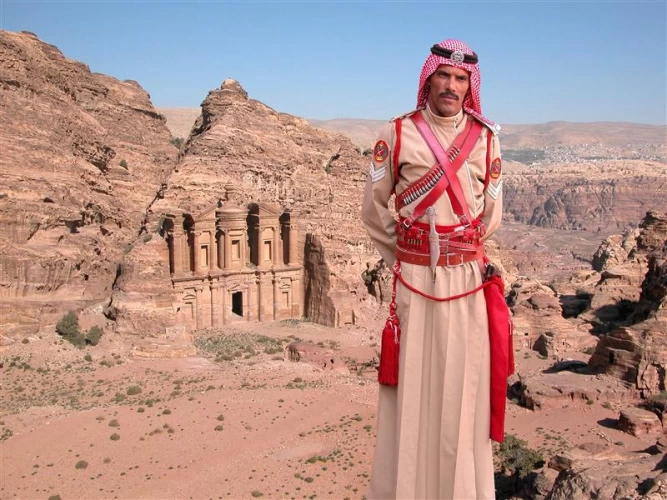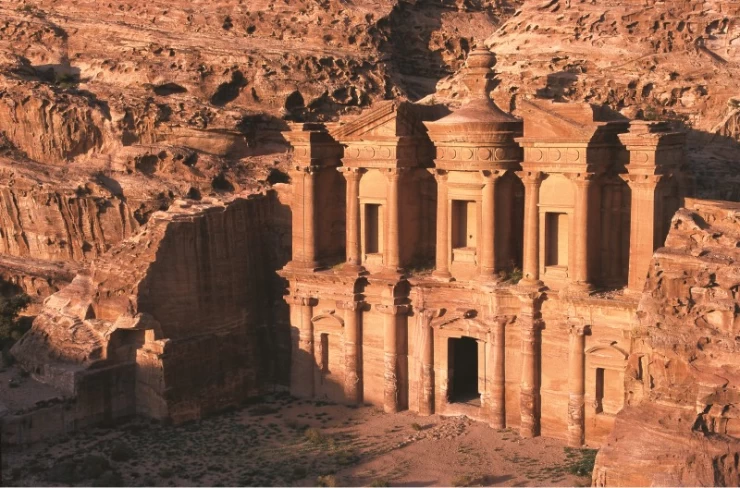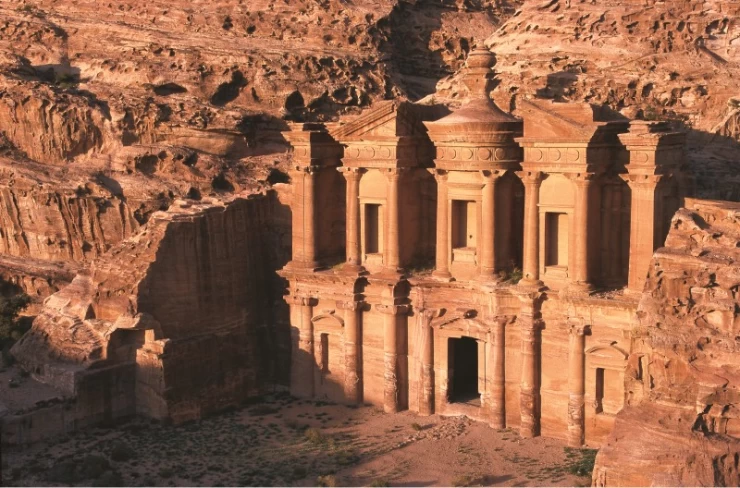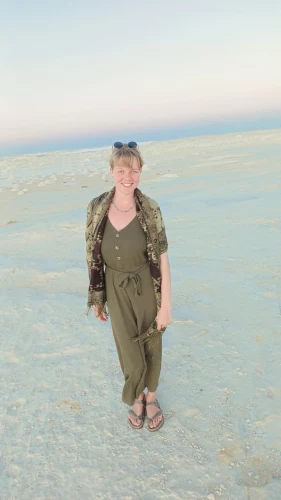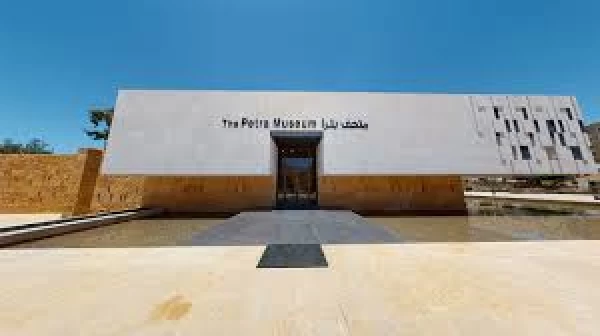
Petra Museum
Petra Museum is located in Tourism St., Petra - Wadi Musa Jordan.
The museum is one of the most famous tourist places in Jordan. It contains more than 250 artifacts displaying the history of this city and depicting the life of the Nabateans who ruled Petra in the past. You can also find Nabatean coins, Nabatean pottery, and elephant crowns displayed here, making it one of the best places to visit in Jordan.
There are two museums in the city of Petra, the first of which was established in 1963 under the name of the Old Petra Museum. It is located in a cave in one of the rocky mountains overlooking the city center. It consists of the main hall and two side rooms. Inside, it contains a number of display cabinets that include a large group of archaeological assets that date back To the Edomite, Nabataean, Roman, and Byzantine periods that were discovered in the city of Petra during excavations carried out by a number of foreign archaeological missions in cooperation with the Department of Antiquities, in addition to a number of pieces of architectural decoration and stone carvings found in the city.
The second museum in the Pink City is the Nabatean Petra Museum, which was opened by the Department of Antiquities in 1994. It is located in the center of Pink City also and near the other museum. It consists of three main halls.
The first hall
It includes an introduction hall on the history of the Nabateans and the geology of Petra, in addition to artifacts related to the Neolithic period.
The second hall
It is dedicated to the finds from the archaeological excavations and arranged according to their chronological sequence, starting with the Bayda excavation dating back to the Stone Age, its Tawilan excavation dating back to the Iron Age, the Zantour excavation, which revealed late Roman Nabatean homes, and the Zaraba excavation, which revealed Nabatean pottery kilns dating to the end of the first century BC until the century BC. The sixth AD, the excavation of the Nabataean Winged Lions Temple, the Qasr al-Bint excavation in the middle of Petra, the Great Temple, and pieces belonging to the excavation of the Byzantine church.
The third hall
It contains a group of pottery beds according to the development of their industry, bronze and pottery statues, colored and regular dishes, coins, ornaments, and jewelry, in addition to some pottery pieces and jars of different sizes.
The museum contains about 600 artifacts displayed in the display cabinets.
Latest Articles
Admin
Seabourn Sojourn Cruise Stops in Safaga Port
The Seabourn Sojourn, the flagship vessel of Seabourn Cruise Line's ultra-luxury fleet, was built in 2008 at the T. Mariotti shipyard in Genoa, Italy. Measuring 198 metres, it can accommodate up to 450 guests in its 225 spacious all-suite staterooms.
Admin
Norwegian Sky Cruise Stops in Safaga Port
Norwegian Cruise Line operates a cruise ship called the Norwegian Sky. It was constructed in 1999 and can accommodate 2,004 passengers in addition to 878 crew members. The ship has several dining establishments, lounges and bars, a spa and fitness center, swimming pools, and a number of entertainment areas.
Admin
Explora II Cruise Stops in Safaga Port
Explora II, the second vessel in the Explora Journeys fleet, sets sail in 2024 to redefine luxury cruising. With 461 ocean-front suites, 9 culinary experiences, and 4 pools, this haven of sophistication and sustainability promises an unforgettable "Ocean State of Mind" journey to inspiring destinations.
Admin
Mein Schiff 6 Cruise Stops in Safaga Port
The Mein Schiff 6 is the latest cruise ship in the renowned TUI Cruises fleet, offering passengers a luxurious and sophisticated cruise experience. At 315 metres long, this floating resort features a range of dining options, entertainment, and recreational facilities, including a spa, fitness centre, and sports amenities.
Admin
Mein Schiff 4 Cruise Stops in Safaga Port
When the Mein Schiff 4 cruise ship docks in Safaga, Egypt, passengers are granted access to a realm of ancient wonders. Aboard this state-of-the-art vessel, guests can embark on meticulously curated shore excursions that showcase the region's most iconic landmarks, including the Giza Pyramids, the enigmatic Sphinx, and the remarkable tombs and temples of the Valley of the Kings in Luxor.
Admin
MS Europa Cruise Stops in Safaga Port
The Silver Moon, Silversea's latest flagship, is a luxury cruise ship that offers an exceptional travel experience for Venezuelans exploring Egypt. With a capacity of 596 guests and an impressive 40,700 gross tonnes, the Silver Moon maintains the small-ship intimacy and spacious all-suite accommodations that are the hallmarks of the Silversea brand.






